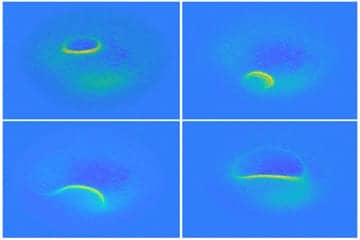A new University of Maryland School of Public Health study reveals how walking strengthens connections within and between three of the brain’s networks, including one associated with Alzheimer’s disease, adding to the growing evidence that exercise improves brain health.
Published this month in the Journal for Alzheimer’s Disease Reports, the study examined the brains and story recollection abilities of older adults with normal brain function and those diagnosed with mild cognitive impairment, which is a slight decline in mental abilities like memory, reasoning and judgment, and a risk factor for Alzheimer’s.
“Historically, the brain networks we studied in this research show deterioration over time in people with mild cognitive impairment and Alzheimer’s disease,” says J. Carson Smith, PhD, a kinesiology professor with the School of Public Health and principal investigator of the study. “They become disconnected, and as a result, people lose their ability to think clearly and remember things. We’re demonstrating that exercise training strengthens these connections.”
The study builds upon Smith’s previous research, which showed how walking may decrease cerebral blood flow and improve brain function in older adults with mild cognitive impairment.
Thirty-three participants, who ranged between 71 and 85 years old, walked while supervised on a treadmill four days a week for 12 weeks. Before and after this exercise regimen, researchers asked participants to read a short story and then repeat it out loud with as many details as possible.
Participants also underwent functional MRI, or fMRI, so researchers could measure changes in communication within and between the three brain networks that control cognitive function:
- Default mode network: Activates when a person isn’t doing a specific task (think daydreaming about the grocery list) and is connected to the hippocampus—one of the first brain regions affected by Alzheimer’s disease. It’s also where Alzheimer’s and amyloid plaques, a prime suspect for Alzheimer’s disease found around nerve cells, show up in tests.
- Frontoparietal network: Regulates decisions made when a person is completing a task. It also involves memory.
- Salience network: Monitors the external world and stimuli and then decides what deserves attention. It also facilitates switching between networks to optimize performance.
After 12 weeks of exercise, researchers repeated the tests and saw significant improvements in participants’ story recall abilities.
“The brain activity was stronger and more synchronized, demonstrating exercise actually can induce the brain’s ability to change and adapt,” Smith says. “These results provide even more hope that exercise may be useful as a way to prevent or help stabilize people with mild cognitive impairment and maybe, over the long term, delay their conversion to Alzheimer’s dementia.”
Researchers also observed stronger activity within the default mode network, within the salience network and in the connections between the three networks.






